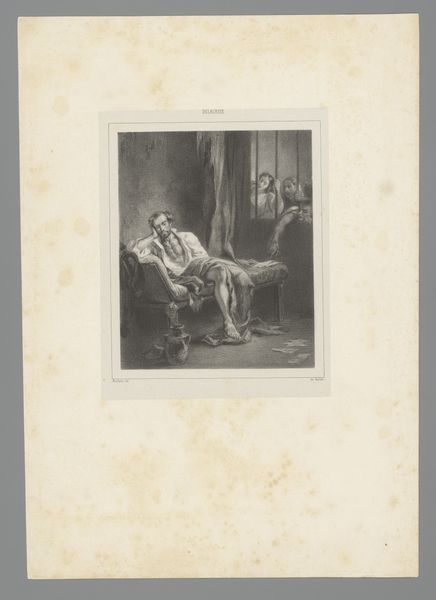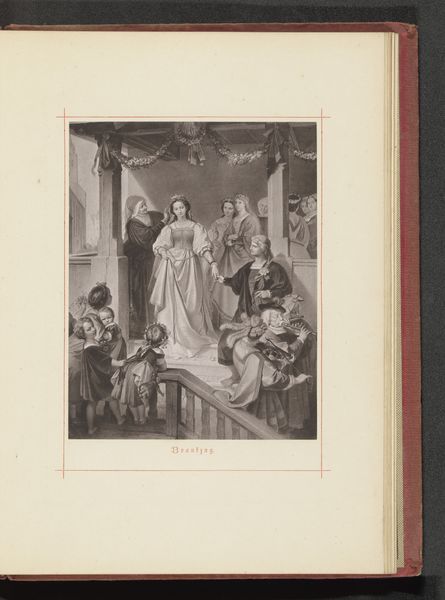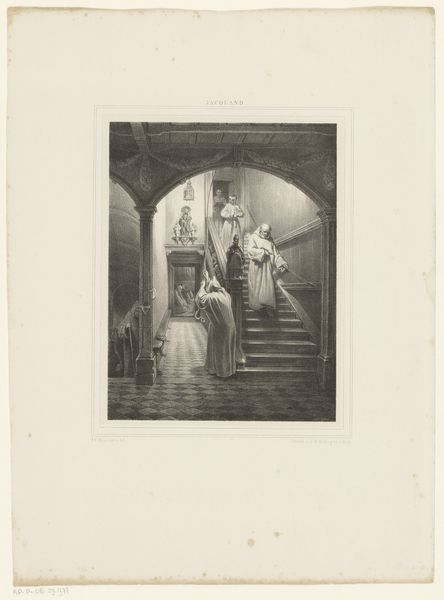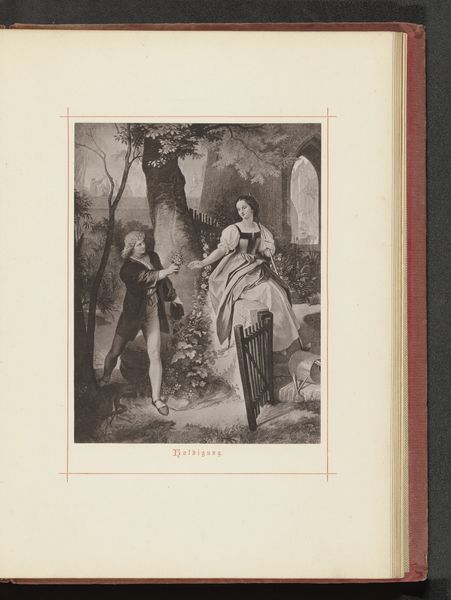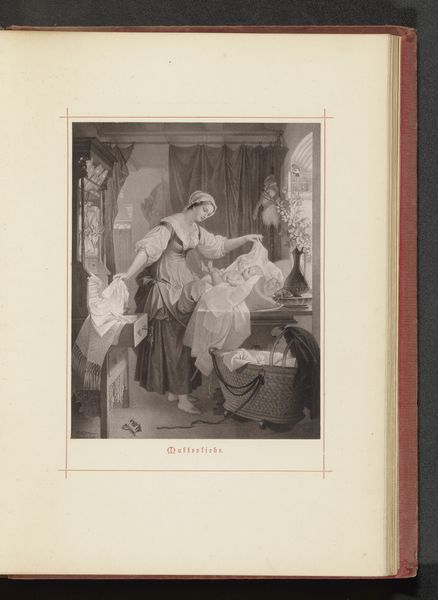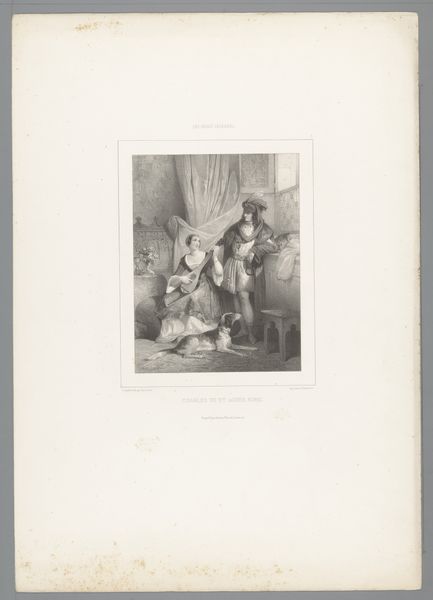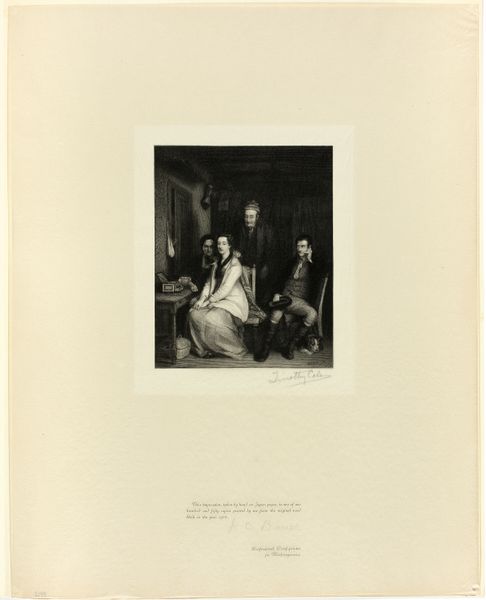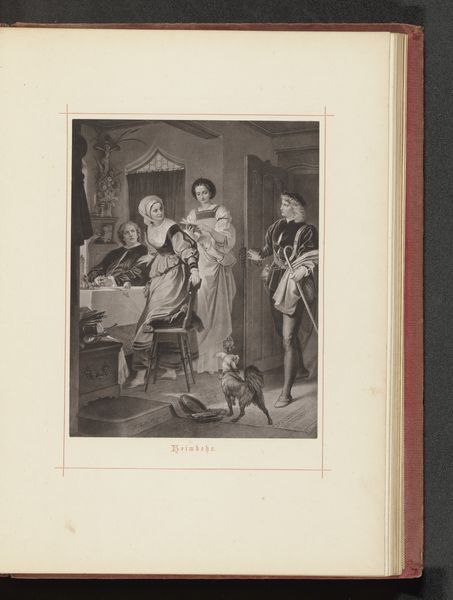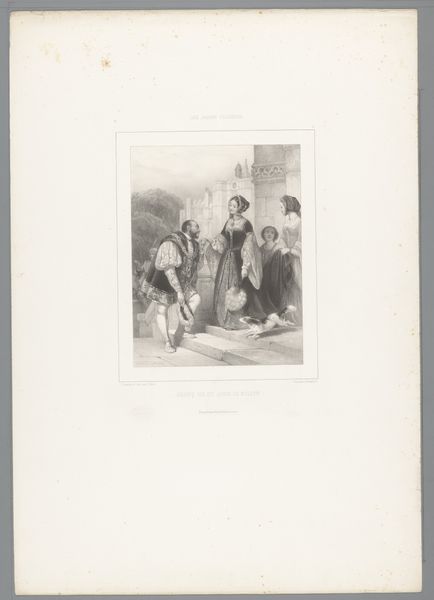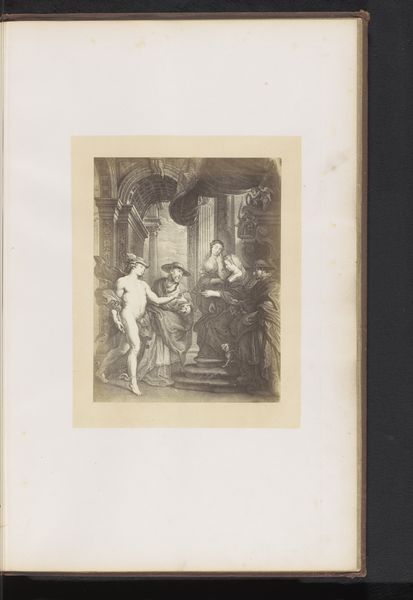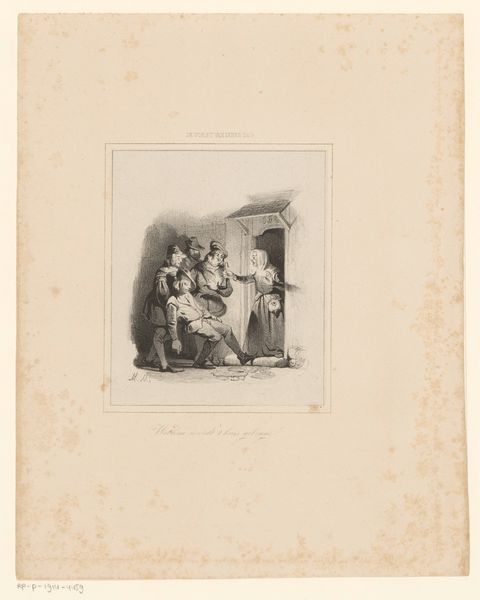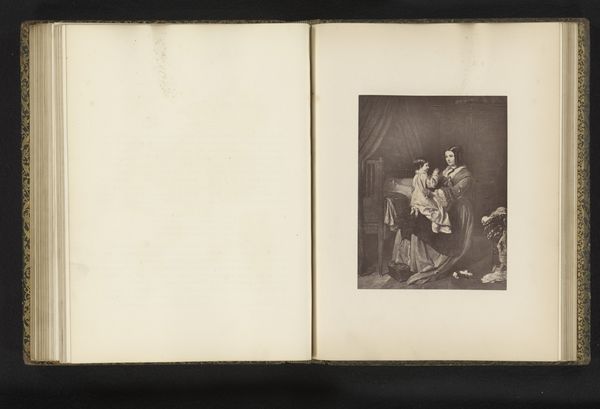
Fotoreproductie van een tekening van een jongen die weg loopt bij een huis waar vermoedelijk zijn familie hem nakijkt c. 1871 - 1881
0:00
0:00
Dimensions: height 174 mm, width 134 mm
Copyright: Rijks Museum: Open Domain
Curator: This is an anonymous photogravure dating from around the 1870s to 1880s, and it's described as depicting a young man departing from a house where his family, it is presumed, watches him go. Editor: It feels overwhelmingly melancholic, doesn't it? The soft gradations of grey create a somber mood. The sharp diagonal of the stairs bisects the composition, reinforcing the feeling of separation. Curator: Absolutely. Consider the socio-economic context: in the late 19th century, societal expectations and familial duties weighed heavily on young men. This image subtly touches on themes of leaving home, seeking fortune, or perhaps even fleeing a stifling environment. Editor: The figure's downward gaze further accentuates this feeling of withdrawal and resignation. Look how the lines of the architecture almost box in the remaining figures, highlighting his physical and emotional distance. The young man’s cane emphasizes his downward progression. Curator: The composition emphasizes the gendered space as well. Note how the woman sitting below and to the side seems trapped and how the romantic couple stands, barred by the stair railing. This emphasizes how they are excluded from taking any path other than the one dictated by their status and location. This piece may function as a larger statement about societal pressures for some young people to make their own way in the world without support or privilege. Editor: Also the etching lines help guide our attention across the artwork, building narrative layers from foreground to background and subtly stressing certain symbolic relationships between all actors within the implied drama. Note how the dark lines along the central male subject’s path lead downwards and away. The contrast is stark where he intersects with the implied stasis of the stairwell and lovers. Curator: I think it’s significant, too, how the print would have circulated – an affordable reproduction reaching potentially a wide audience, mirroring perhaps similar life events. The artist captures this universal sense of leaving the familiar. Editor: It's remarkable how much narrative tension and emotion an anonymous engraver could elicit using such simple formal arrangements, using tone to draw us right into that moment of farewell. It does speak volumes about societal norms of the era.
Comments
No comments
Be the first to comment and join the conversation on the ultimate creative platform.
